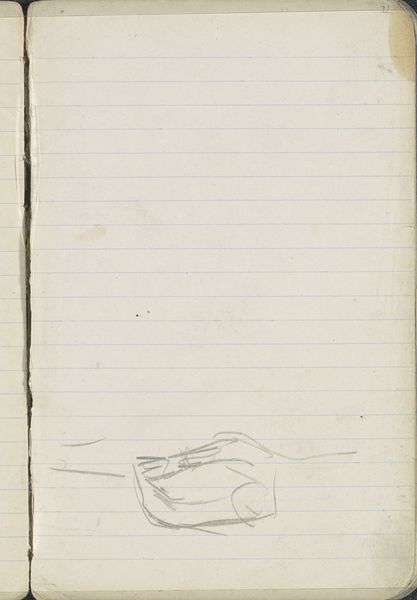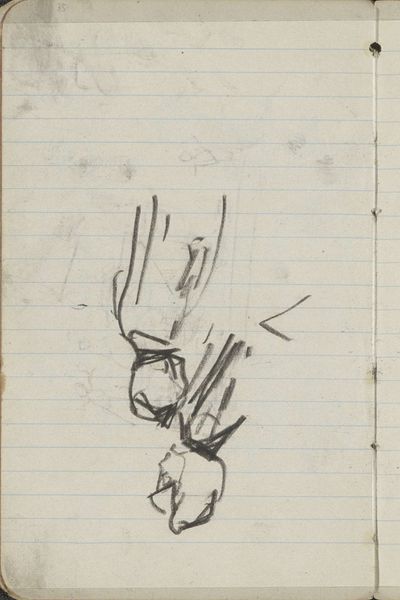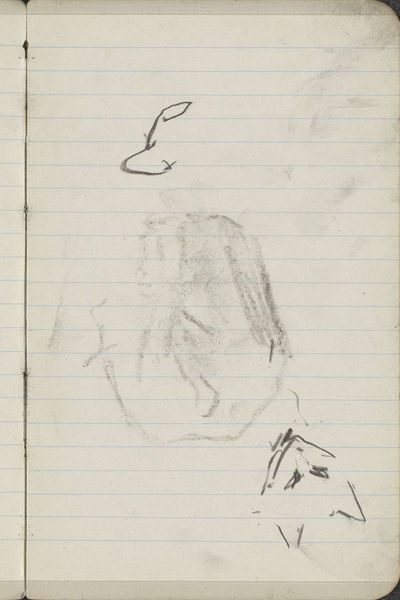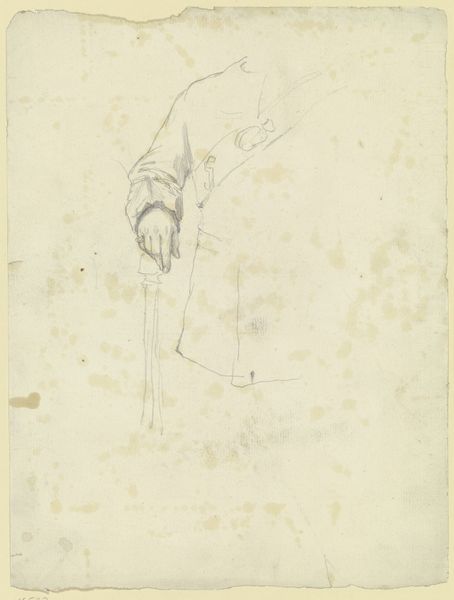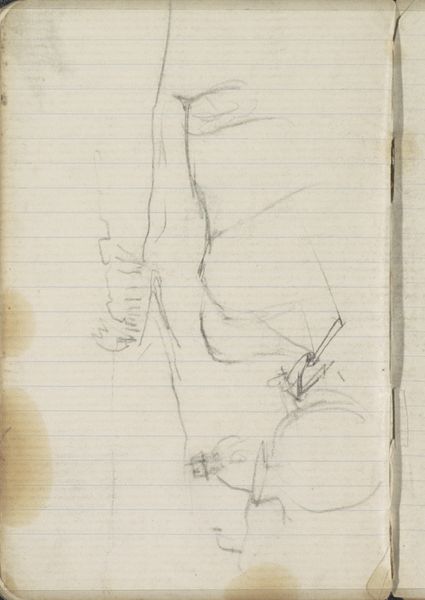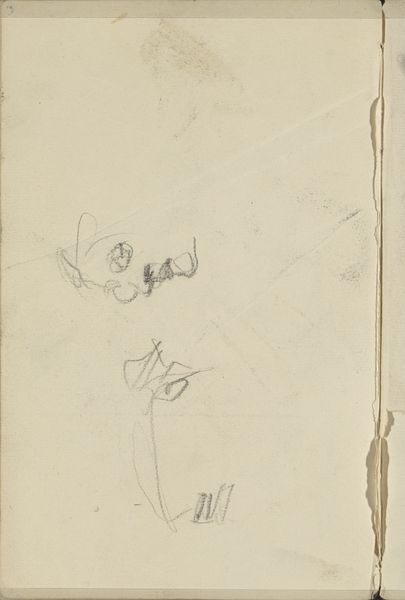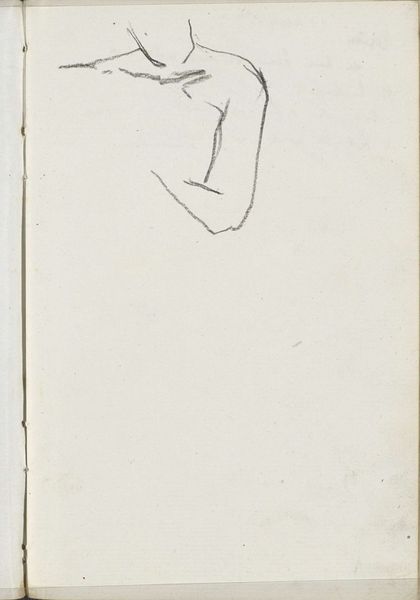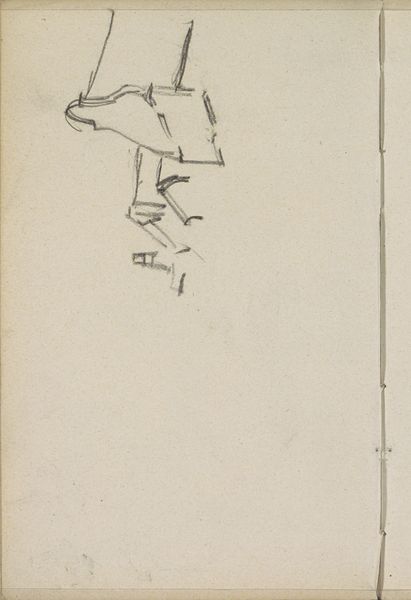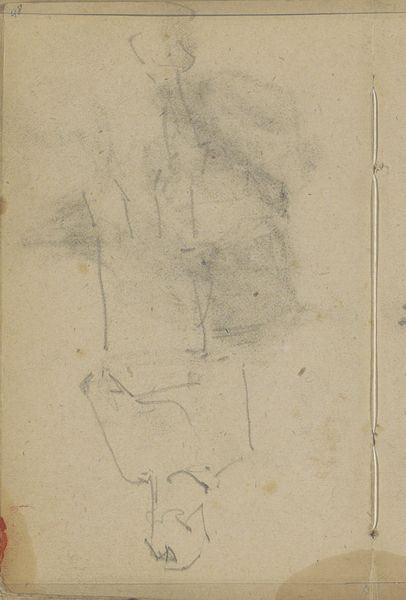
Copyright: Rijks Museum: Open Domain
Curator: George Hendrik Breitner created this quick sketch in pencil on paper titled, “Aangespannen paard” around 1896-1897. It resides here at the Rijksmuseum. The first thing that jumps out is… Editor: Its ephemeral quality. You can practically feel the fleeting moment, the urgency of the artist to capture a horse in motion. There's a raw, unpolished feel to it that I find immediately compelling. Curator: Precisely. Notice the confident yet minimal lines. Breitner doesn't aim for photographic realism; rather, he suggests the essence of the horse, its energy and form reduced to just a few strokes. See how he uses line weight to create depth. Editor: But what does this "essence" represent? The horse, particularly in urban environments of the late 19th century, was a symbol of labor, transportation, and even military might. It also represents a social hierarchy because access to resources depended upon work performed or commissioned through equestrian transportation and/or commerce. Isn't there a dialogue here about human reliance on animal power and exploitation? Curator: Undoubtedly, the historical context you propose can illuminate the work in those themes. But focusing solely on the representational element, I think diminishes the formal achievements here. Look at how the lines interact with the horizontal lines of the paper. The composition transcends a mere study of a horse. It’s an investigation into form and movement. Editor: I can see that the composition certainly is innovative when viewed for its time. But shouldn’t we also look critically at why this artist and others of the Impressionist movement were mostly men of means depicting a rapidly changing industrialized world where certain peoples where rendered voiceless? I struggle viewing landscapes and portraiture outside that context. Curator: I understand that is critical in its own respect and how that shapes contemporary interpretation of such works, but, for me, it comes back to that tension within the artistic frame; line, form and movement over anything else, or do any other external factors hold greater importance? Editor: Perhaps the true power of this sketch lies in its capacity to hold both perspectives. We can appreciate the artistic economy of the piece and the social questions it evokes. A glimpse of equine existence rendered immortal— incomplete and rapid on the page as it might seem. Curator: It invites layered reflections. A seemingly simple sketch that has enduring reverberations, indeed.
Comments
No comments
Be the first to comment and join the conversation on the ultimate creative platform.
